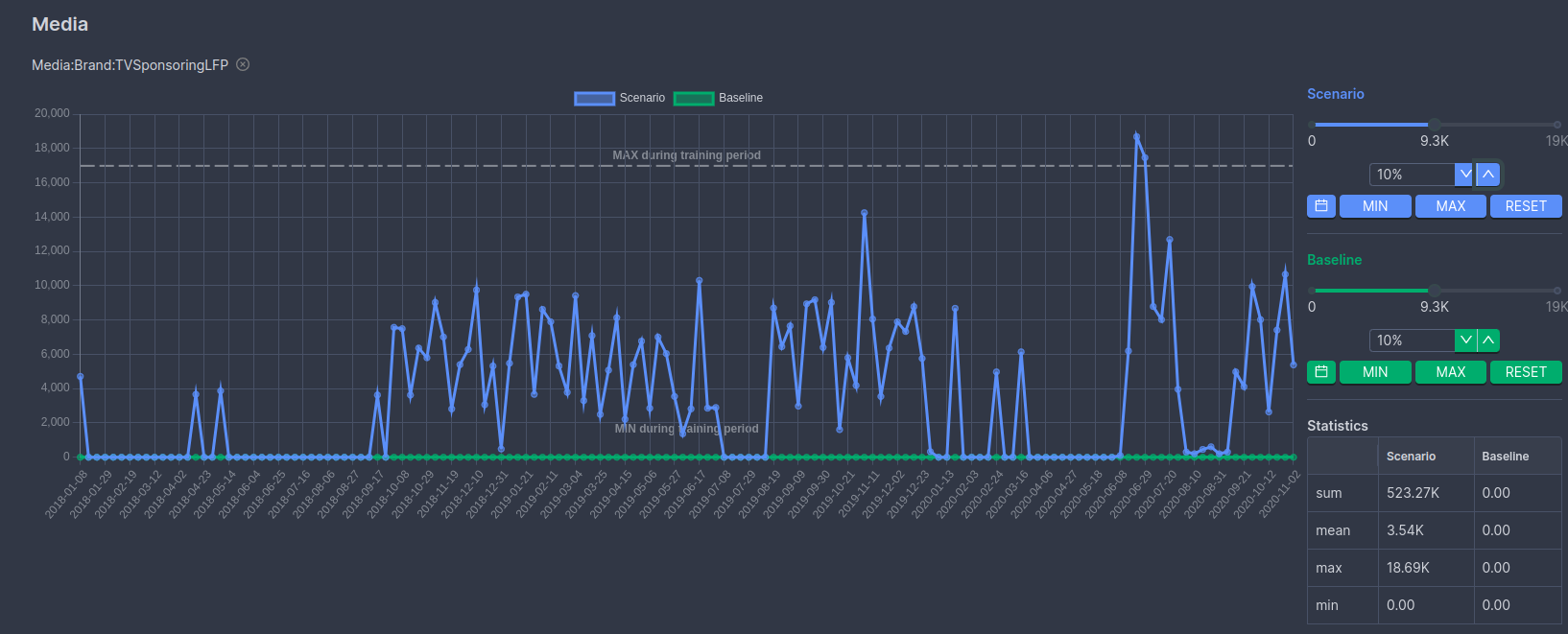Simulations
Simulations in Alviss AI enable you to explore various scenarios and compare them against each other, providing valuable insights into the optimal actions to take. This powerful feature allows you to ask the model about different scenarios and analyze their impacts comprehensively.
Scenario vs Baseline¶
A key aspect of simulations in Alviss AI is the ability to set scenarios and baselines for comparison. Here’s how it works:
- Scenario: This represents the variable or action you want to test. For example, you might want to see the impact of increasing media investments.
- Baseline: This represents the control or default condition against which the scenario is compared. For example, the baseline might be not investing in media at all.

Running a Simulation¶
- Navigate to Simulations: Go to the simulations section in the Alviss AI platform.
- Set Variables: Select the variables you want to include in the simulation. For each variable, you can define a scenario and a baseline.
- Configure Scenario and Baseline:
- Scenario Example: Set media investments to a certain amount.
- Baseline Example: Set media investments to zero.
- Run the Simulation: Click on the “Run Simulation” button to execute the simulation.
Understanding the Results¶
When the simulation completes, Alviss AI provides detailed results that include:
- Baseline Results: The outcomes if the baseline conditions are met.
- Scenario Results: The outcomes if the scenario conditions are met.
- Difference Analysis: The comparison between the scenario and baseline, highlighting the differences and impacts of the scenario.
Utilizing Simulation Insights¶
The insights gained from simulations can help you make data-driven decisions by understanding the potential outcomes of different actions. For example, by comparing media investment scenarios, you can identify the most effective investment strategy to maximize returns or optimize resource allocation.